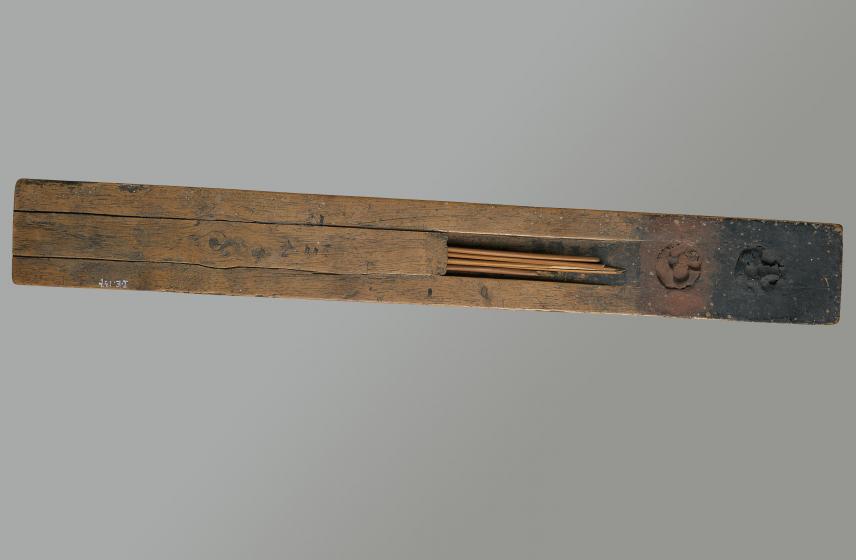Scribe's palette
Information sur l’artiste
Egypt

Étui à calames, Nouvel Empire.
Image © Lyon MBA – Photo Alain Basset
The palette, along with the dish used to grind pigments and the water bowl, was an essential part of the Egyptian scribe's writing equipment. It had a central compartment for storing brushes made from papyrus stems (reed brushes), and a reserve of solid ink. It was also used as a ruler for drawing straight lines. The scribe would have taken his brush, soaked in water laced with acacia gum, and used it to pick up the pigments in the inkwells at the end of the palette. Red pigment was made from a mixture of cinnabar, mercury sulphide, or red lead and lead oxide, while black ink was made of soot from burnt animal bones. The fact that both colours are worn, along with the traces of hieratic writing on the palette, show that this object has been used.
Using reed brushes, the scribe would write in hieratic script on various materials (papyrus, fabric, wood) or trace the outlines of hieroglyphs to be carved. Scribes, priests, and officials were taught to read and write in academies. Mastering this knowledge gave them power and prestige. However, the majority of the population did gradually learn to read and write.
Placing a scribe's palette in a tomb also held symbolic meaning: it associated the deceased with Thoth, the great god of Hermopolis, patron of scribes, who symbolised the invention of writing, calculating and measuring time, science, and the arts.
Egypt
Ramesside period, circa 1300-1070 B.C.
Wood and natural pigments
L. 36.5; W. 4.7; D. 0.9 cm
Deposited by the Victor-Loret Institute of Egyptology of Lyon in 1988
Inv. G 10





